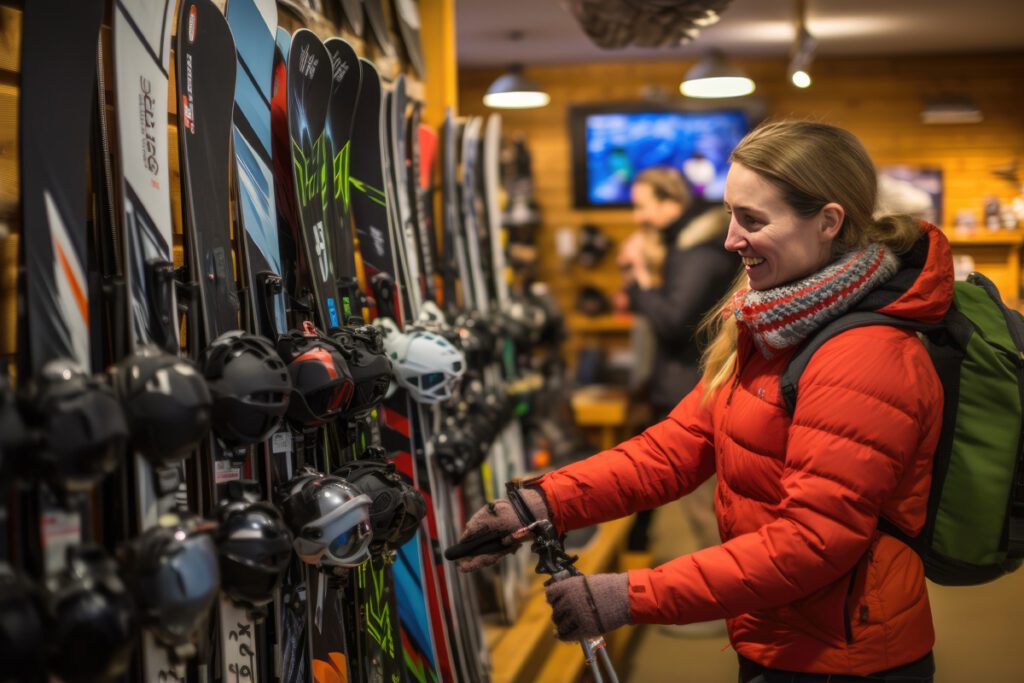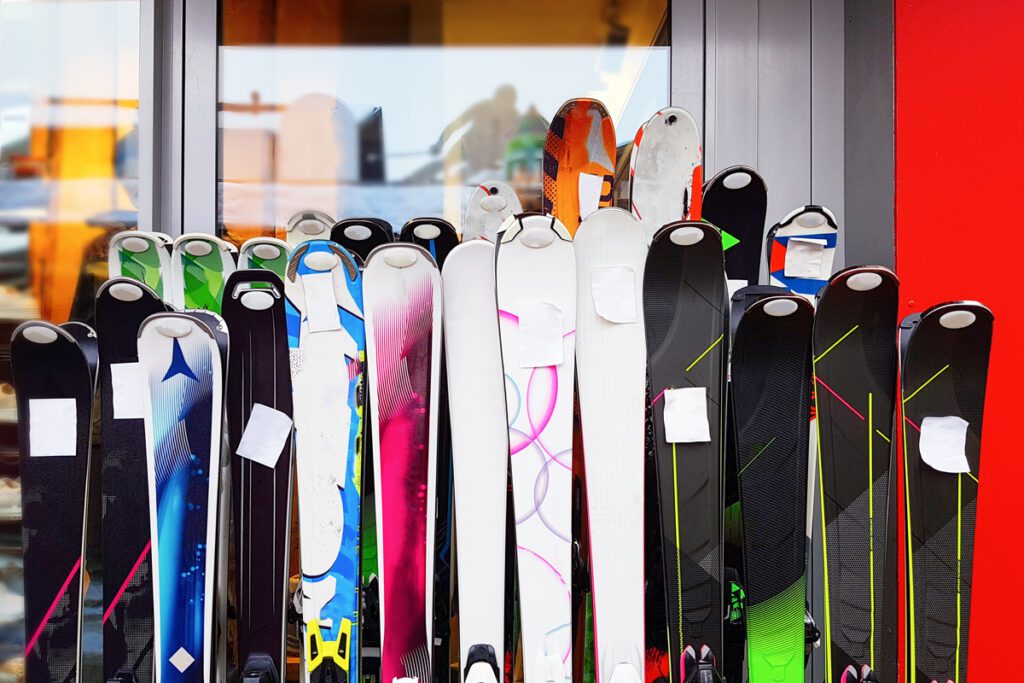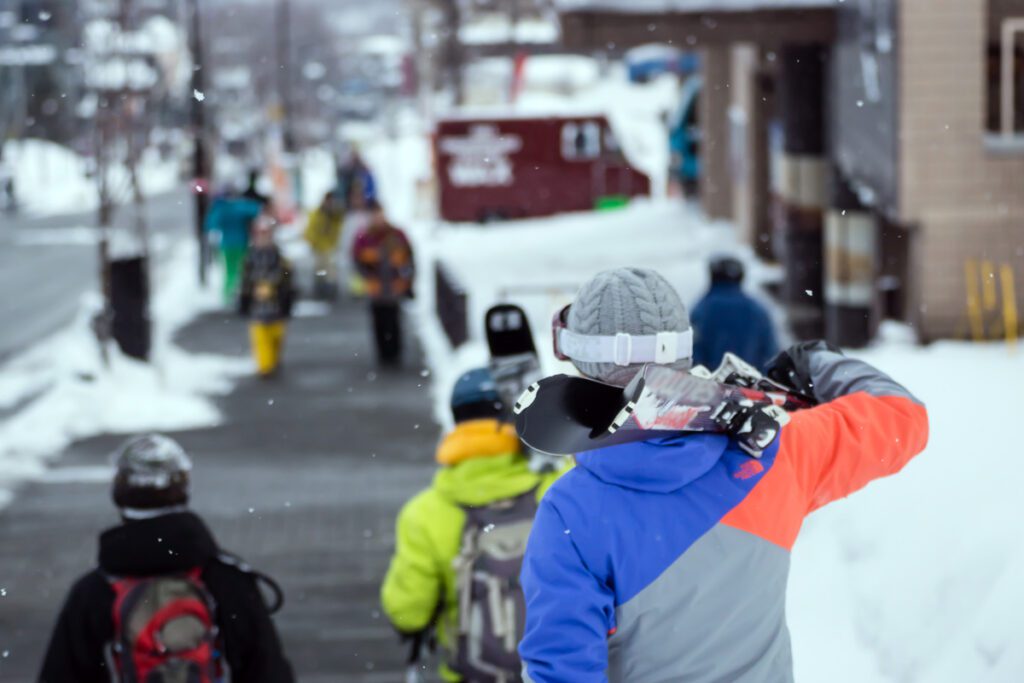A Beginner’s Guide to Renting Ski Equipment
Skiing and snowboarding are thrilling winter activities that attract enthusiasts to the slopes every year. Whether you’re a seasoned skier or hitting the mountain for the first time, having the right gear is essential for a safe and enjoyable experience. Renting ski equipment is a convenient and cost-effective way to get exactly what you need without the hassle of buying your own. In this guide, we’ll cover everything you need to know about renting ski equipment, including tips for choosing the right skis, boots, and snowboards, so you can hit the slopes with confidence.

Types of Ski Gear
Alpine, freestyle, and backcountry skis each serve different skiing styles and conditions, and choosing the right pair is key when renting ski equipment. Alpine skis offer stability and control on groomed slopes, perfect for on-piste skiing. Freestyle skis are designed for terrain parks, giving you the agility needed for jumps and tricks. For off-piste adventures, backcountry skis provide the versatility to handle variable snow conditions and explore untamed terrain. Knowing the differences helps you select the right skis when renting ski equipment, ensuring a safe and enjoyable day on the mountain.
Selecting the appropriate length and width of skis is a crucial step when renting equipment. Ski length is often associated with the skier’s skill level, with shorter skis being more manageable for beginners. Additionally, considering the width of the skis becomes essential for optimal performance in specific snow conditions. Narrower skis excel on hard-packed snow, while wider skis offer better floatation in powder.
Snowboard Gear Basics
Snowboards come in various types, each tailored to different riding styles and terrains. All-mountain snowboards are versatile companions, suitable for a range of conditions and terrains. Freestyle snowboards, characterized by their agility, are perfect for those who enjoy tricks, jumps, and terrain park features. For deep powder enthusiasts, powder snowboards are specially crafted to enhance floatation and maneuverability in challenging snow conditions.
Selecting the right size and shape of a snowboard involves considering factors such as rider weight, height, and personal preferences. The size of the snowboard affects stability and maneuverability, making it essential to find a balance that aligns with your skills. Additionally, understanding the different shapes of snowboards, such as directional or twin-tip, plays a role in determining the board’s performance characteristics.
Ski and Snowboard Rentals
Before renting ski equipment, take the time to research available rental shops. Reading reviews from fellow enthusiasts and seeking recommendations from friends who have experienced the rental process can provide trusted insights into the quality and service offered by different shops.
Securing your equipment rental in advance is a crucial step in ensuring a smooth rental experience. Many rental shops allow online reservations, providing convenience and potentially offering discounts for early bookings. Evaluate whether online reservations align with your preferences or if in-person bookings better suit your needs. Being proactive in this step guarantees availability and streamlines the overall rental process.
Rental Packages
Once you’ve identified a suitable rental shop and initiated the reservation process, it’s time to explore the intricacies of rental packages. Understanding the differences between basic and premium packages, along with additional gear and accessories, ensures that you acquire the equipment that aligns with your needs and enhances your overall winter sports experience.
Rental shops typically offer basic and premium packages tailored to different preferences and budgets. Basic packages often include standard equipment necessary for skiing or snowboarding, providing a cost-effective option for beginners or those on a tighter budget. On the other hand, premium packages may offer high-performance gear with advanced features, suitable for more experienced enthusiasts willing to invest in enhanced equipment.

Beyond the essential skis or snowboard, rental shops often provide additional gear and accessories for a complete experience. Helmets, goggles, gloves, and other items contribute to safety and comfort on the slopes. Assess the availability of these extras, their inclusion in rental packages, and any associated costs. Prioritizing safety gear is essential, especially for beginners, while seasoned riders might focus on specialized accessories to enhance their performance.
Equipment Fittings
Properly fitted ski or snowboard equipment is the foundation of a positive winter sports experience. Ill-fitting gear can lead to discomfort, reduced maneuverability, and even safety concerns. Rental shops typically employ knowledgeable staff who can assist in finding the right size and adjustments for your skis or snowboard. Communicate any concerns or preferences you may have, such as a snug fit for better control or a more relaxed fit for added comfort during extended periods of use.
Clear communication when renting ski equipment is key to a successful fitting process. Share information about your skiing or snowboarding experience, skill level, and any specific preferences you may have. Whether you’re a beginner seeking additional stability or an advanced rider looking for specific performance features, conveying this information ensures that the rental staff can tailor the equipment to fit your needs.
Before hitting the slopes, take the time to test the equipment and make any necessary adjustments. This step allows you to familiarize yourself with the gear, ensuring that bindings, straps, and other components are secure and comfortable. Testing the equipment in a controlled environment allows you to promptly address any issues, enhancing your confidence and readiness for the skiing or snowboarding experience ahead.
Tips for First-Time Renters
For first-time renters, seeking guidance from rental professionals is a wise step. Rental staff know the equipment and can provide insights based on your skill level and preferences. Don’t hesitate to ask questions about the fitting process, equipment selection, and safety considerations. Their expertise can significantly enhance your confidence and set the foundation for a positive winter sports experience.
Safety should be the main priority, especially for beginners, when renting equipment. Familiarize yourself with safety precautions related to skiing or snowboarding, and inquire about any safety gear available for rental. Helmets, in particular, are crucial for protecting against head injuries. Make sure you understand how to wear and secure safety equipment properly, and don’t hesitate to ask for assistance if needed.
While rental shops handle the maintenance of their equipment, having a basic understanding of care and maintenance during your rental period can be beneficial. Learn how to secure bindings, inspect for any issues, and handle equipment responsibly. This knowledge contributes to your safety on the slopes and helps maintain the condition of the rented gear, ensuring a smooth experience for yourself and future renters.

Rental Duration and Returns
Understanding your planned duration on the slopes is essential for making the right choice when renting equipment. Daily rentals are ideal for a short getaway or a one-day excursion, while weekly rentals cater to those embarking on a more extended winter sports vacation. Consider your itinerary and select the rental duration that aligns with the duration of your skiing or snowboarding adventure.
Adhering to rental return deadlines is paramount to avoid late fees and ensure a smooth process. Rental shops often impose late fees for equipment returned beyond the agreed-upon duration. Familiarize yourself with the specific return policies of the rental shop, including any grace periods or additional charges associated with late returns. Planning ahead and returning equipment promptly avoids financial penalties and allows the rental shop to prepare the gear for the next adventurers.
Before returning the rented equipment, take the time to inspect it thoroughly. Check for any damages, wear, or issues that may have occurred during your use. Reporting any concerns to the rental staff ensures transparency and helps determine whether any damages are attributable to regular wear and tear or require additional attention. This step contributes to a fair and smooth return process, allowing you to wrap up your winter sports adventure on a positive note.